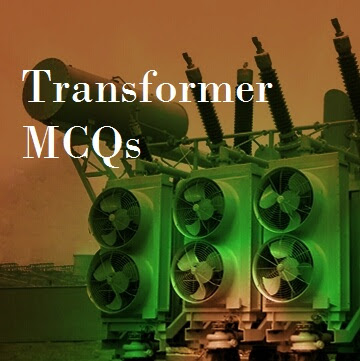Multiple Choice Questions of Electric Current and Ohm's Law (31-45)
Electrical Engineering MCQ 31 TO 45
Multiple Choice Questions and Answers
Latest Electrical Interview Questions and Answers List
31.Which method can be used for absolute measurement of resistances ?
(A)Ohm's law method
(B)Wheatstone bridge method
(C)Releigh method
(D) Lortentz method.
32.Three 3 ohm resistors are connected to form a triangle. What is the resistance between any two of the corners?
(A) 3 / 4 ohms
(B) 3 ohms
(C) 2 ohms
(D) 4/3 ohm.
33.Five resistances are connected as shown in figure below. The equivalent resistance between the points A and B will be
(A) 35 ohms
(B) 25 ohms
(C) 15 ohms
(D) 5 ohms.
34.How many different combinations may be obtained with three resistors, each having the resistance R ?
(A) 3
(B) 4
(C) 5
(D) 6.
35.A wire of 0.14 mm diameter and specific resistance 9.6 micro ohm-cm is 440 cm long. The resistance of the wire will be
(A) 9.6 ohm
(B) 11.3 ohm
(C) 13.7 ohm
(D) 27.4 ohm.
36.Ohm's law is not applicable to
(A) DC circuits
(B) high currents
(C) small resistors
(D) semi-conductors.
37.A metal resistor has resistance of 10 ohm at 0°C and 11 ohms at 160°C, the temperature coefficient is
(A) 0.00625 / °C
(B) 0.0625 /°C
(C) 0.000625 /°C
(D) 0.625 /°C.
Questions 38 to 40 refer to Figure given below.
Five resistances are connected as shown and the combination is connected to a 40 V supply.
38. Voltage between point P and Q will be
(A) 40 V
(B) 22.5 V
(C) 20 V
(D) 17.5 V.
39.The current in 4 ohm resistor will be
(A) 2.1 A
(B) 2.7 A
(C) 3.0 A
(D) 3.5 A.
40.Least current will flow through
(A) 25 ohm resistor
(B) 18 ohm resistor
(C) 10 ohm resistor
(D) 5 ohm resistor.
41.Total power loss in the circuit is
(A)10W
(B) 50.2 W
(C) 205 W
(D) 410 W.
42.A resistance of 5 ohms is further drawn so that its length becomes double. Its resistance will now be
(A) 5 ohms
(B) 7.5 ohms
(C) 10 ohms
(D) 20 ohms.
43.Specific resistance of a substance is measured in
(A) ohms
(B) mhos
(C) ohm-cm
(D) cm/ohm.
44.A wire of resistance R has it length and cross-section both doubled. Its resistance will become
(A) 4 R
(B)2 R
(C) R
(D) R / 4.
45.Ohm's law is not applicable in all the following cases Except
(A) Electrolytes
(B) Arc lamps
(C) Insulators
(D) Vacuum ratio values.

























